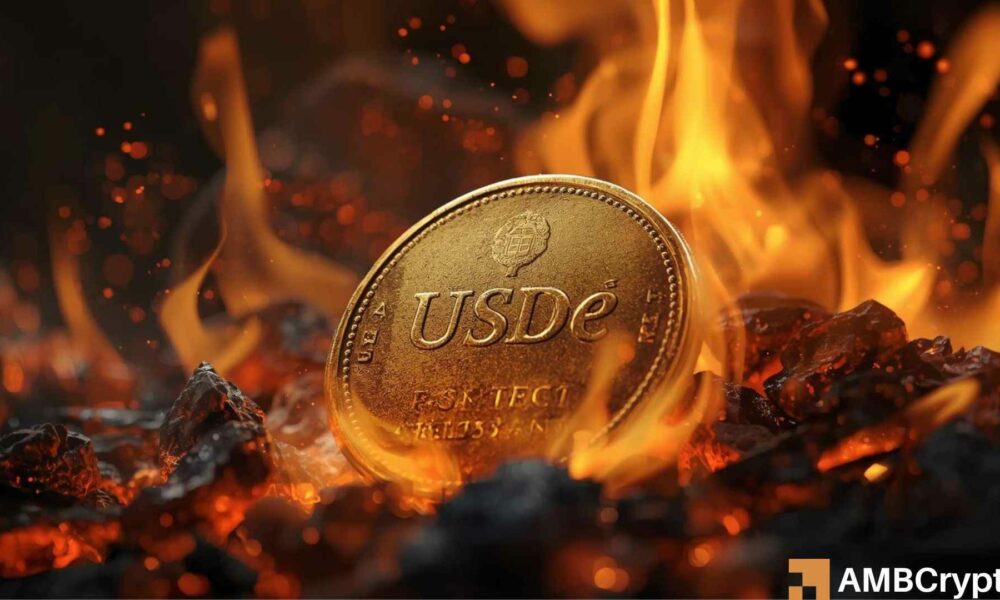Understanding the Risks of USDe: Lessons from the Recent Crypto Crash
The cryptocurrency market is known for its volatility, but recent events surrounding USDe’s de-peg from the U.S. dollar have underscored significant systemic risks. On October 10, an event transpired that not only affected USDe but triggered a broader contagion across various platforms, particularly Binance. This incident has reignited discussions within the crypto community about the nature of stablecoins and their implications for market stability. Key figures, including OKX founder Star Xu, are calling for a reassessment of how assets like USDe should be viewed and managed in the ever-evolving landscape of cryptocurrency.
The De-Pegging of USDe: A Cautionary Alarm
USDe, a cryptocurrency designed to mirror the U.S. dollar, recently faced a severe de-peg that led to a drop of 35% on the Binance exchange. This isolated incident has raised alarms about its real nature—Xu makes a compelling argument that USDe should be treated more as a "tokenized hedge fund" than a straightforward stablecoin. The implications of this shift in perception could be significant. If USDe isn’t robustly managed and regulated, it poses systemic risks that could extend beyond its immediate market, endangering the larger financial ecosystem.
A Flash Crash and Its Consequences
The consequences of the USDe de-peg were dire, resulting in the largest liquidation event in crypto history, with approximately $19 billion wiped out in minutes. This stark reality acts as a painful lesson for leveraged traders, highlighting the vulnerabilities associated with thin order books and microstructure within trading platforms. The volatility of USDe not only impacted traders directly but also affected collateral levels, leading to a cascading effect that challenged the stability of numerous altcoins and exchanges.
The Role of Market Makers in Crisis Management
During the de-peg crisis, market makers (MMs) serve as crucial liquidity providers. However, in this instance, access to Binance was impeded, rendering MMs unable to mitigate the impact of USDe’s de-peg. Haseeb Qureshi, a partner at VC Dragonfly, likened the situation to a fire where the emergency personnel couldn’t reach the site in time, allowing the situation to escalate uncontrollably. This analogy sheds light on the critical need for robust mechanisms that facilitate quick responses to market distress, especially in decentralized finance (DeFi).
The Necessary Conversation on Risk Management
The October 10 flash crash has sparked essential conversations among crypto leaders about risk management in the ecosystem. Xu’s declaration serves as a call to action for the industry, urging stakeholders to implement more stringent controls and guidelines around assets like USDe. Some voices within the community echo the sentiment that a thorough review of the current state of stablecoins and their risk profiles is needed to prevent future occurrences of market-wide contagion.
Future Outlook: Can the Industry Learn?
As traders and investors navigate the aftershocks of the USDe de-peg, there are signs of cautious optimism. USDe has shown signs of recovery, bouncing back over 10% alongside other market assets. However, the current market sentiment is tinged with caution, indicating a wait-and-see approach among investors. The ability of the crypto industry to learn from this incident will be crucial for its future resilience. Whether it will adopt enhanced risk management strategies, transparency, and a broader consensus on the nature of stablecoins remains to be seen, but it’s clear that the lessons of October 10 must be heeded for the stability of the entire crypto ecosystem.
In summary, the de-pegging of USDe reveals essential vulnerabilities within the cryptocurrency space. Industry leaders, including Star Xu, are advocating for a paradigm shift in how we view and manage stablecoins to avert future crises. The painful lessons learned can inform better risk management strategies, improving the overall stability of an increasingly pivotal market.


